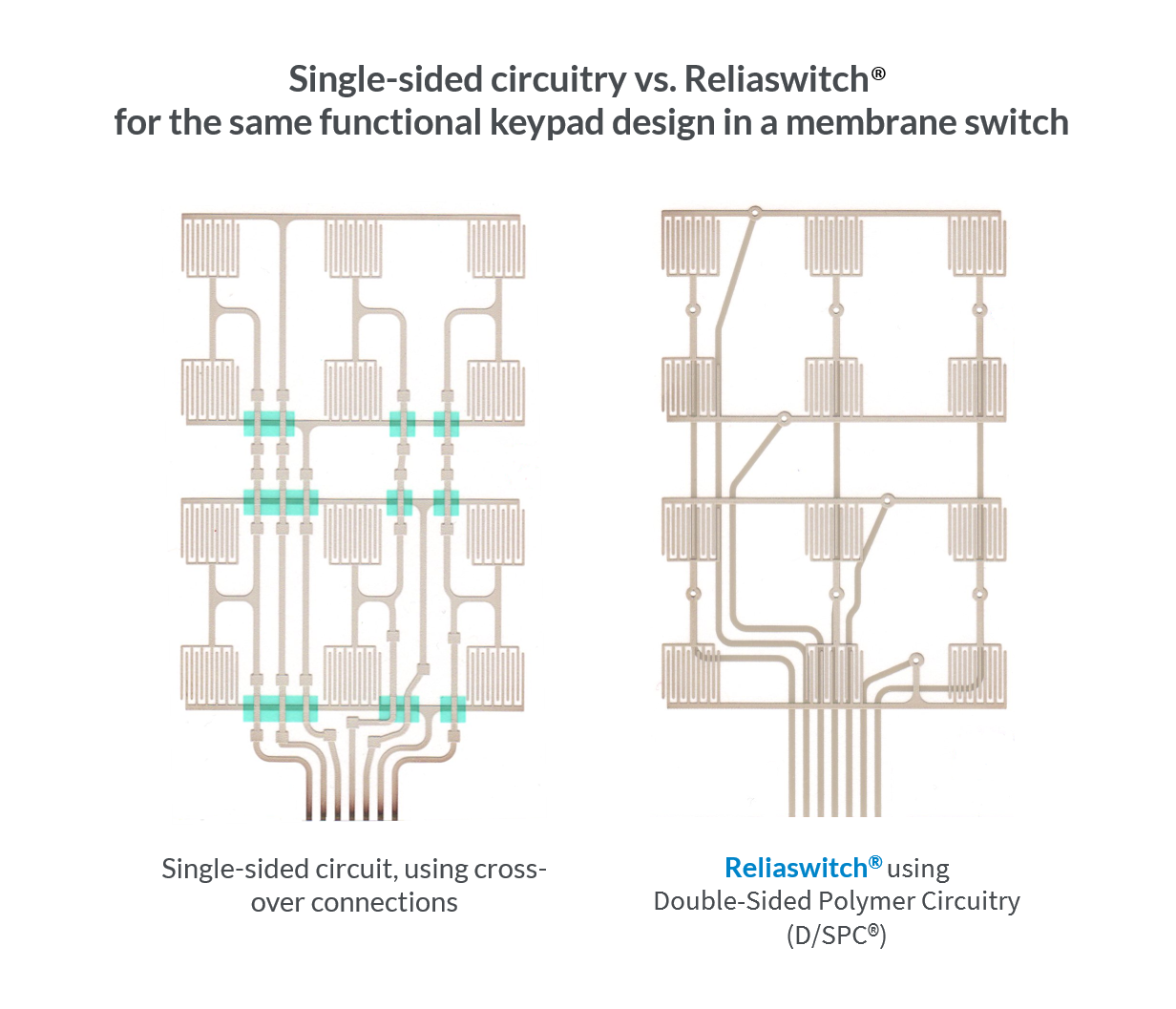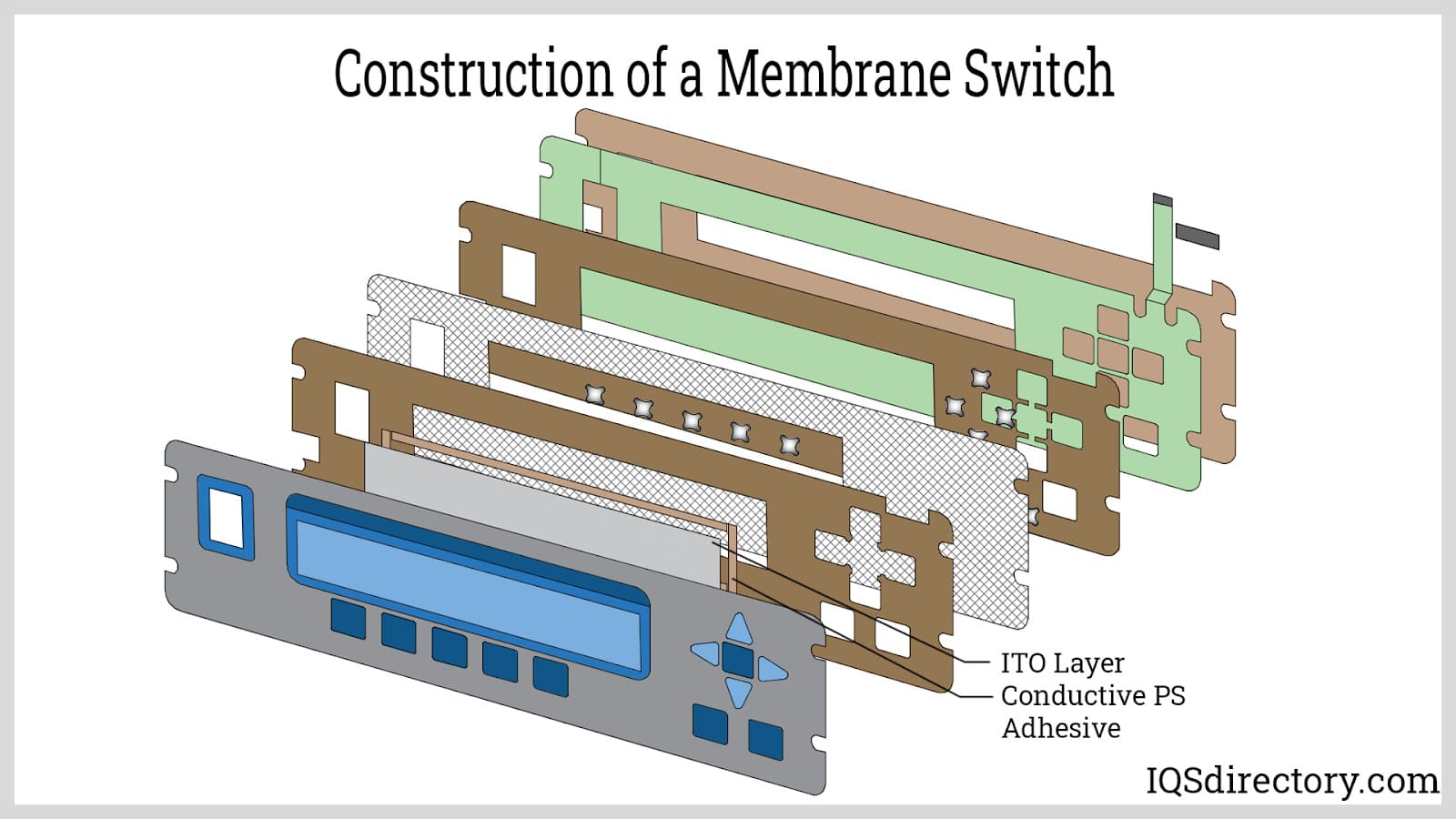Everything you need to know about membrane switch customization
Wiki Article
Understanding the Importance of Membrane Layer Change in Modern Electronic Devices
Membrane switches are important parts in modern digital gadgets. They offer a mix of performance and design that boosts user communication. Their sturdy and lightweight nature makes them appropriate for numerous applications. As sectors advance, the demand for modification and progressed attributes grows. Understanding just how membrane switches over add to innovation discloses their significance in shaping the future of electronics. What exists ahead for this innovation?The Basics of Membrane Layer Change Innovation
Commonly neglected, membrane button technology plays an essential duty in the contemporary electronics landscape. These gadgets, made up of numerous layers, act as interface for numerous digital products, ranging from family appliances to medical equipment. A typical membrane switch consists of a graphic overlay, a spacer layer, and a circuit layer, which are diligently set up to create a useful interface.When stress is put on the overlay, the circuit layer is completed, permitting signals to be transferred to the gadget. This modern technology is known for its convenience, allowing personalization in functionality, layout, and form to meet certain individual needs. Additionally, membrane buttons are slim and light-weight, making them suitable for applications where room is a costs. Their sturdiness and resistance to environmental elements additionally enhance their appeal, ensuring they can hold up against severe conditions while maintaining capability. Overall, membrane button technology is integral to producing user-friendly and effective digital gadgets
Key Advantages of Membrane Layer Switches
Membrane layer switches over deal several key benefits that make them a recommended option in numerous electronic applications. Their design permits a small form aspect, allowing suppliers to produce light-weight and smooth gadgets. Additionally, membrane layer switches are immune to dirt, dampness, and chemicals, which improves their sturdiness and long life in requiring environments. The responsive comments offered by these switches can boost user experience, making them user-friendly and simple to operate.Furthermore, membrane switches can be personalized with diverse graphics and shades, permitting unique branding possibilities. The production procedure is normally economical, especially for high-volume production, as it decreases setting up time and streamlines layout. Lastly, membrane switches call for minimal maintenance, contributing to lower general functional costs. These advantages emphasize their growing appeal in contemporary electronics, where dependability and user-friendly interfaces are vital.
Applications Throughout Numerous Industries
The adaptability of membrane switches enables their prevalent adoption across numerous sectors. In the medical field, they are commonly used in diagnostic equipment and patient monitoring systems, supplying a resilient user interface resistant to pollutants. The automotive industry makes use of membrane switches for dashboard controls, boosting customer experience with smooth designs that endure rough conditions. In customer electronics, they offer as control board for tools such as microwaves and coffee machine, giving an user-friendly interface that is easy to clean. The aerospace industry uses membrane switches in cockpit controls, where dependability and space performance are critical. Furthermore, the commercial sector leverages these buttons in equipment and control systems to guarantee durable operation in demanding atmospheres. This broad series of applications highlights the adaptability of membrane switches, making them essential elements in improving performance and individual communication throughout diverse technological landscapes.Personalization and Design Flexibility

Future Patterns in Membrane Layer Switch Growth
Emerging patterns in membrane button development show an expanding emphasis on boosted capability and combination with smart modern technologies. As consumer need for a lot more innovative electronic tools rises, suppliers are concentrating on developing membrane switches over that not just serve standard operational functions however additionally integrate features like touch sensitivity, backlighting, and haptic feedback.Furthermore, advancements in products are anticipated to improve toughness and ecological resistance, making membrane switches over ideal for varied applications in markets such as healthcare, vehicle, and customer electronic devices. The integration of capacitive touch technology is likely to become a lot more widespread, allowing for sleeker layouts and improved customer interfaces. membrane switch.Additionally, the rise of the Internet of Things (IoT) is prompting the development of membrane layer changes that can interact wirelessly with other gadgets, boosting interconnectivity. In general, the future of membrane layer button modern technology appears promising, driven by development and the search of straightforward servicesOften Asked Inquiries
Exactly How Do Membrane Layer Switches Compare to Typical Mechanical Buttons?
Membrane layer buttons, being a lot more space-efficient and using a sleek style, contrast with traditional mechanical switches that give tactile hop over to here comments. The former typically feature adjustable graphics, while the latter typically guarantee toughness and dependability in numerous applications.What Products Are Generally Made Use Of in Membrane Layer Switch Over Production?
Membrane layer buttons are commonly generated utilizing materials such as polyester, polycarbonate, and published conductive inks. These materials provide flexibility, resilience, and responsiveness, making them suitable for numerous applications in electronic gadgets and interface.Can Membrane Switches Be Fixed or Reused?
Membrane layer buttons can frequently be repaired, especially if minor issues occur, such as sticky failing or surface damages. Complete reuse is generally restricted due to wear and potential destruction of products over time.
Just How Do Ecological Variables Impact Membrane Switch Over Efficiency?
Environmental factors, such as temperature, moisture, and exposure to chemicals, considerably affect membrane switch efficiency. Extreme conditions can lead to deterioration, influencing responsiveness and long life, eventually compromising the capability of the device in numerous applications.What Is the Regular Life-span of a Membrane Switch?
The typical life-span of a membrane button typically ranges from 1 to 5 million actuations, relying on aspects such as use regularity, ecological problems, and the products used in production, affecting durability and efficiency longevity. A normal membrane switch consists of a visuals overlay, a spacer layer, and a circuit layer, which are meticulously put together to develop a useful interface - membrane switch.When pressure is used to the overlay, the circuit layer is finished, permitting signals to be transmitted to the gadget. The responsive responses offered by these switches can pop over to this web-site improve individual experience, view website making them intuitive and very easy to operate.Furthermore, membrane buttons can be customized with varied graphics and shades, enabling for special branding opportunities. As customer demand for extra sophisticated digital tools increases, makers are concentrating on producing membrane switches over that not only offer basic operational roles but also incorporate attributes like touch sensitivity, backlighting, and haptic feedback.Furthermore, innovations in products are expected to improve resilience and environmental resistance, making membrane switches ideal for varied applications in industries such as healthcare, automotive, and consumer electronics. The combination of capacitive touch innovation is likely to end up being a lot more prevalent, enabling for sleeker designs and boosted individual interfaces.Additionally, the increase of the Net of Things (IoT) is motivating the development of membrane layer changes that can communicate wirelessly with various other tools, enhancing interconnectivity. Membrane switches, being more space-efficient and offering a smooth layout, contrast with standard mechanical switches that give tactile feedbackReport this wiki page